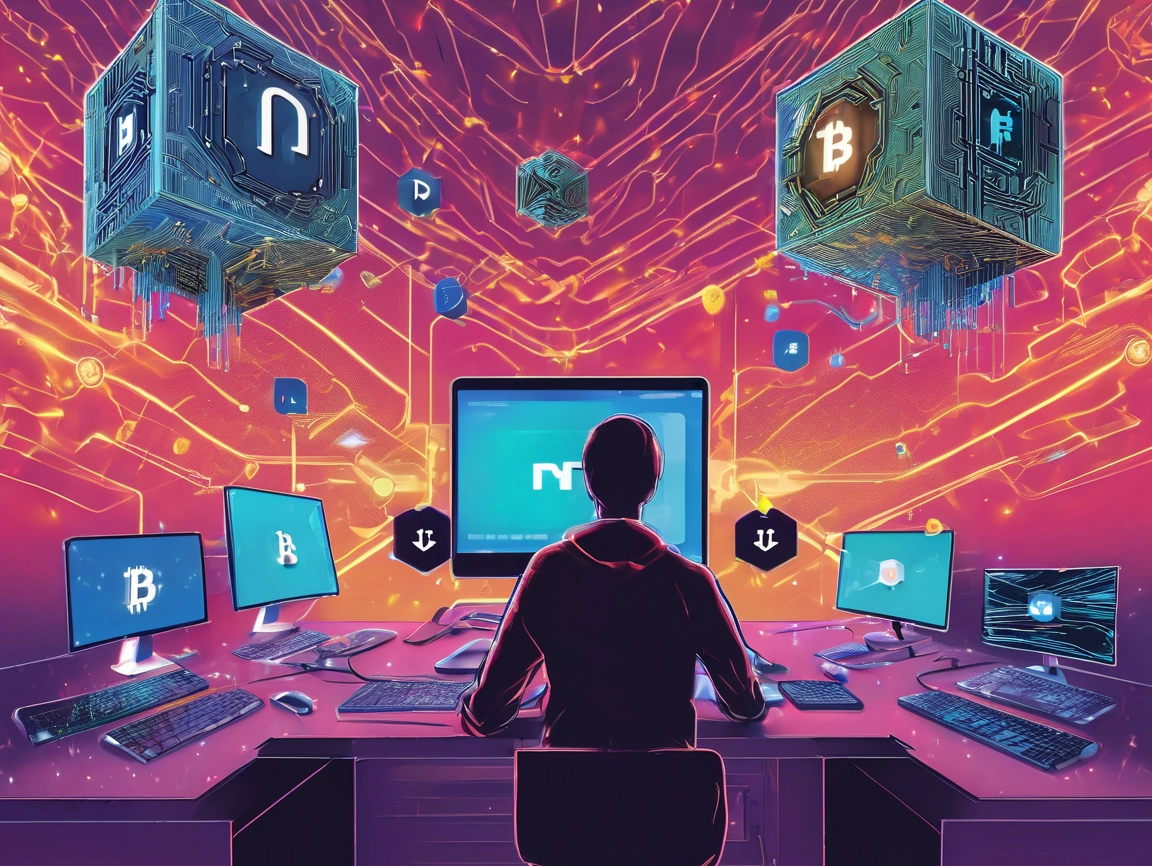Now Reading: Understanding NFT Storage Problems and Solutions
- 01
Understanding NFT Storage Problems and Solutions
Understanding NFT Storage Problems and Solutions


The digital collectibles market exploded in 2021, reaching a staggering $370 billion valuation. Landmark sales like Kevin McCoy’s “Quantum” – which fetched $1.47 million at Sotheby’s – revealed both the potential and complexities of blockchain-based ownership. While these unique tokens revolutionize how we prove authenticity, their long-term preservation faces critical hurdles most enthusiasts overlook.
At the heart of this issue lies a common misunderstanding. Buyers often assume they’re purchasing indestructible digital files. In reality, they acquire unchangeable blockchain records that point to external hosting locations. This separation between ownership proof and actual content storage creates vulnerabilities – if the linked data disappears, the asset becomes inaccessible.
Blockchain networks weren’t designed to store large files efficiently. High transaction costs and scalability limitations force creators to host media elsewhere, typically on centralized servers or temporary cloud platforms. This contradiction between decentralized ideals and practical storage methods threatens the permanence these tokens supposedly guarantee.
Key Takeaways
- The global market for blockchain-based collectibles exceeds $370 billion with projected exponential growth
- Ownership records reside on-chain, but linked content often depends on vulnerable off-chain systems
- Common misconceptions about digital permanence put investments at risk
- Technical limitations drive reliance on centralized storage solutions
- Emerging preservation methods directly impact asset value and longevity
- Informed decisions require understanding both blockchain mechanics and storage realities
Introduction to NFT Storage Challenges
Artists and collectors embracing digital assets often overlook a crucial flaw in the system that could erase their investments. While blockchain technology verifies ownership through unchangeable records, the actual artwork or content typically lives elsewhere. This disconnect creates a ticking clock for preservation.

Examining the Digital Asset Landscape
Ethereum-based platforms dominate the market, but face a critical dilemma. Storing large files directly on-chain proves prohibitively expensive. Creators instead host media on external servers while keeping ownership proofs decentralized. This hybrid approach leaves digital works vulnerable to link rot and platform shutdowns.
Collectors frequently misunderstand what they truly own. The certificate of authenticity remains secure, but the prized content depends on third-party infrastructure. If a hosting service folds or changes policies, the connected asset vanishes – leaving an empty shell on the blockchain.
Why Secure Preservation Matters
For creators, losing access to original files means more than financial loss. It breaks trust with supporters and tarnishes professional reputations. A 2022 study showed 38% of blockchain-based art projects used storage solutions with expiration dates under five years.
Investors face similar risks. High-value purchases could become worthless overnight if underlying data becomes inaccessible. Unlike physical collectibles, these digital items require active maintenance to preserve their meaning – and market value.
Exploring NFT Storage Technologies and Methods
Behind every blockchain-based collectible lies a critical decision: where to host the actual content. This choice determines whether digital ownership remains meaningful years after purchase. Two distinct approaches dominate the landscape – centralized convenience versus decentralized resilience.

Centralized Server Solutions and Their Risks
Many platforms rely on services like Amazon CloudFront for hosting. Marketplaces such as Mintable use these web services for affordable, scalable solutions. But this creates dependency on corporate infrastructure.
When content lives on centralized servers, it faces three key risks:
- Service outages disrupting access
- Policy changes deleting files
- Security breaches exposing data
A 2023 analysis revealed 41% of high-value collectibles use Amazon Web Services – creating a fragile ecosystem vulnerable to single points of failure.
Decentralized Options: InterPlanetary File System and Arweave
The InterPlanetary File System (IPFS) revolutionizes preservation through content identifiers. Instead of location-based addressing, files get unique CIDs based on their digital fingerprint. SuperRare uses this method, distributing content across a peer-to-peer network.
Arweave takes decentralization further with blockchain-based permanence. Users pay once to store data across hundreds of nodes. This exploring decentralized storage providers model incentivizes miners to preserve historical data through built-in economic rewards.
Platforms like Valuables now migrate from IPFS to Arweave, seeking guaranteed longevity. However, decentralized methods require technical understanding – a trade-off for true ownership independence.
NFT Storage Problems: Risks and Practical Implications
A $11.6 million audio collection vanished days after its record-breaking auction. This 3LAU incident exposed the fragile reality behind blockchain-based ownership. While certificates remain on-chain forever, the content they represent faces multiple existential threats.
Data Availability and Integrity Concerns
Centralized platforms hold surprising power over supposedly immutable assets. OpenSea deleted a property developer’s $500 purchase by suppressing its metadata. Even decentralized systems like IPFS risk accidental deletions through automated cleanup processes.
The mismatch between permanent ownership records and temporary content hosting creates systemic vulnerabilities. Nodes maintaining distributed networks prioritize efficiency over preservation, leaving assets vulnerable to silent decay.
Security Vulnerabilities in Centralized and Decentralized Systems
Browser-based wallets connected to cloud services account for 68% of security breaches in digital collectibles. While hardware options reduce online risks, they introduce physical dangers – a $150K Bored Ape vanished when its owner’s ledger device malfunctioned.
Marketplace infrastructure flaws compound these issues. An OpenSea coding error recently erased 42 assets worth $100K. These incidents reveal how multiple failure points – from smart contracts to storage nodes – threaten digital ownership’s promises.
Implementing Best Practices for Secure NFT Storage
Protecting blockchain-based collectibles requires strategic planning beyond basic blockchain mechanics. Leading platforms now employ layered security frameworks combining decentralized networks with advanced verification protocols.

Selecting Storage Architectures
Recent analysis shows 39% of top-selling items use decentralized networks like IPFS, while 32% remain on corporate cloud servers. The Ethereum blockchain handles ownership records best, but media files demand separate solutions. Enterprise adopters prioritize systems with built-in digital signatures to control metadata access.
Security Enhancement Tactics
Multi-factor authentication reduces 83% of unauthorized access attempts. Hardware wallets protect high-value items, while encrypted backups preserve critical files. Major artists now store original works across three locations: decentralized networks, private servers, and physical drives.
Platform-Specific Success Stories
OpenSea marketplace improved asset retention by 40% after migrating 18 million files to hybrid systems. Luxury brands using blockchain-based loyalty programs achieved 99.8% data integrity through redundant storage. These cases prove proper preservation strengthens both ownership rights and commercial value.
Final Reflections on NFT Storage Solutions
The digital ownership revolution faces its ultimate test in preserving what makes collectibles valuable – their permanent accessibility. While blockchain technology secures ownership records, the lack of unified standards leaves content survival at the mercy of individual platforms. Creators currently juggle decentralized ideals with practical hosting limitations, creating fragile ecosystems.
Emerging protocols demonstrate potential through novel incentive models. Projects like Arweave show how blockchain-based networks can ensure data integrity across decades. However, true scalability requires solving the economic challenges of enterprise-level storage demands.
Three critical developments will shape progress:
Collaborative frameworks uniting developers and industry leaders
Hybrid systems blending decentralized resilience with corporate infrastructure
Standardized verification processes for cross-platform compatibility
As tokens evolve beyond art into legal contracts and loyalty programs, robust solutions become non-negotiable. The path forward lies in balancing blockchain’s security strengths with storage networks capable of safeguarding humanity’s growing digital legacy.
FAQ
What are the common challenges in preserving digital assets like non-fungible tokens?
Issues include reliance on centralized servers, potential data loss, and mismatched links between blockchain records and off-chain content. Platforms like Amazon Web Services may expose files to downtime or removal, risking permanent inaccessibility.
How does the InterPlanetary File System improve reliability for decentralized content?
IPFS uses peer-to-peer networks to distribute files globally, reducing dependency on single servers. Content is addressed by unique cryptographic hashes, ensuring authenticity even if original hosts go offline.
Why is metadata integrity crucial for maintaining ownership records on blockchains?
Metadata defines traits, provenance, and media links for tokens. If altered or lost, collectors could lose access to the art or proof of authenticity tied to their Ethereum-based assets.
What risks do centralized platforms like Amazon Web Services pose for asset accessibility?
Centralized servers can suffer outages, policy changes, or deletion. For example, if an artist’s image hosted on AWS is removed, the linked token becomes a “broken” asset with no visual representation.
Which strategies do leading marketplaces like OpenSea use to enhance security?
OpenSea recommends using Arweave for permanent storage and IPFS for redundancy. They also encourage creators to verify smart contracts and audit metadata consistency before minting.
How can creators evaluate decentralized vs. centralized systems for long-term preservation?
Assess factors like cost, redundancy, and control. Decentralized networks like Arweave offer tamper-proof storage but may have higher upfront fees. Centralized services provide affordability but require trust in third-party uptime.













